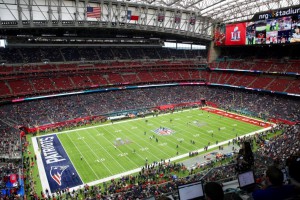This Is What Makes the Super Bowl So Super

Super Bowl LI was quite the game. From that stunning comeback to Lady Gaga’s performance, it certainly had millions of people talking, tweeting and engaging on social media. But millions of people weren’t just talking about the game — some of the public relations campaigns and ads sparked conversations as well.
One of the biggest brand impacts happened long before kickoff. Heinz launched a campaign to make the day after the Super Bowl a national holiday. The #Smunday online campaign generated thousands of impressions, which made up for the company’s decision not to air an ad during the game.
The Super Bowl is one of the few times during the year that all eyes around the nation are glued to their televisions, which leads companies to pay millions for a 30-second ad. So what works, and what makes an ad stand out?
In order to create a memorable campaign in 2017, it’s important to utilize social media and appeal to viewers’ emotions. Think about it —if you’re not watching the TV on game day, you are probably on your phone scrolling through social media. Streaming ads on social media after they air allows people to view them over and over again. Some companies, like Wendy’s, used social influencers to increase viewership. Snickers opted to broadcast a live commercial, which generated buzz online for its creativity. Other companies, like 84 Lumber, aired a segment of their commercial and then directed viewers to their website to view it in full.
Many Super Bowl campaigns opted to comment on current social justice issues. These brands used their airtime as an opportunity to reach consumers of all backgrounds in a particularly divisive time. Many of these ads were less about the product and more about what the brand stood for. Coca Cola re-aired one of its controversial commercials, titled “America the Beautiful,” that celebrated our country’s diversity. Many other brands took notice of this trend: Audi’s advertisement advocated for gender equality, AirBnB showed support for diversity with the hashtag #WeAccept, and Budweiser showed an immigrant’s tale. Several of these ads were subject to criticism for their controversial stances, but they still had the country talking. Kia won the USA Today Ad Meter poll for enlisting Melissa McCarthy to advocate for environmental awareness.
Another key strategy that worked for brands was humor. It’s a 10, a hair product company, showed a diverse group of people with different hair styles. But what many people found humorous was its subtle jest about President Trump’s famous (or infamous) coif. Honda took a different route with humor, as its commercial featuring celebrity yearbook pictures invoked a twinge of nostalgia. This ad resonated because it was both universal and good-natured.
Given the divided nature of the country, Super Bowl LI provided an opportunity for brands to reach out to a variety of people around the country. Some were funny and some were controversial, but many got people talking.
—
Ryan Wall is the vice president of La Salle University’s Chapter of PRSSA. He is a junior majoring in communication (communication management/public relations) with a minor in Latin American studies.
Sarah Pino is a senior at La Salle University, majoring in communication with a focus in public relations. She’s involved in a variety of clubs on campus.
Dana Pecora is a sophomore communication major at La Salle University with a dual track in public relations and mass media. You can catch her on La Salle’s television station, where she works on several shows.
